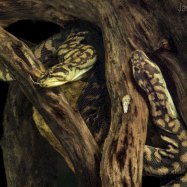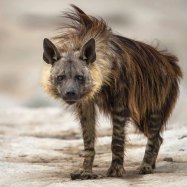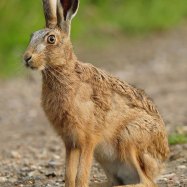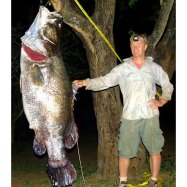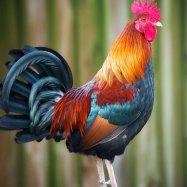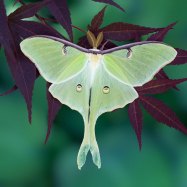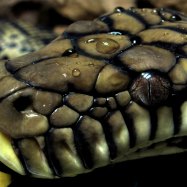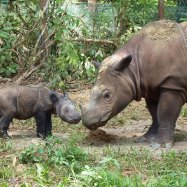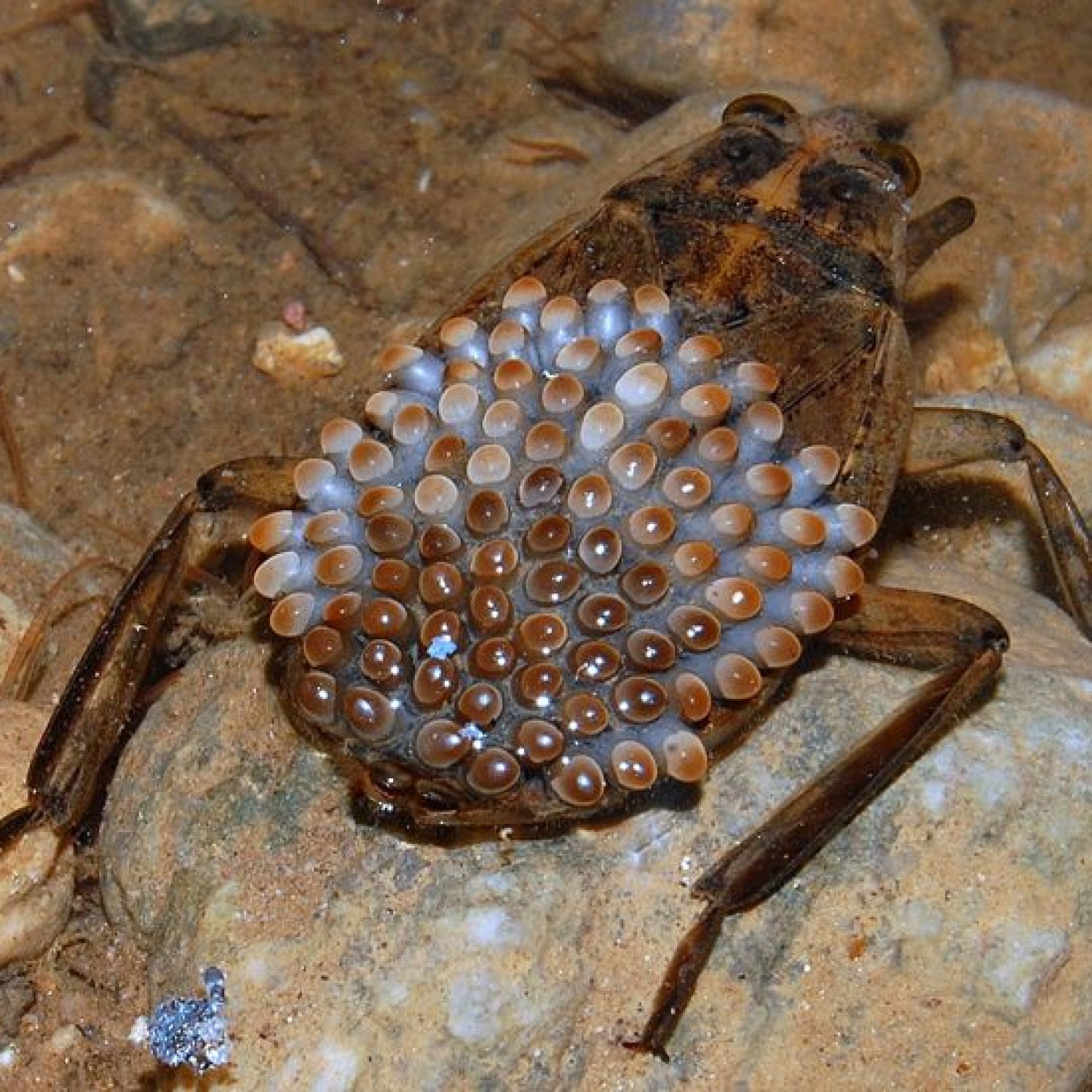
Water Bug
Up to 2.5 inches (6.35 cm)
The water bug, found in North and Central America, can grow up to 2.5 inches and belongs to the Belostomatidae family. With its large, oval-shaped body, long legs, and pointed mouthparts, it's well-equipped for both swimming and hunting. Keep an eye out for these impressive creatures in freshwater habitats.
Animal Details Summary:
Common Name: Giant Water Bug
Kingdom: Animalia
Habitat: Freshwater habitats such as ponds, lakes, and slow-moving streams
The Fascinating World of the Giant Water Bug
Deep in the freshwater habitats of North and Central America, lies a creature that has been captivating humans for centuries. With its imposing size and predatory nature, the Giant Water Bug, also known as Lethocerus americanus, has caught the attention of scientists, researchers, and nature enthusiasts alike.This intriguing insect belongs to the kingdom Animalia and the phylum Arthropoda, making it a part of the vast family of animals with jointed legs. Its distinct characteristics and behavior have placed it in the class Insecta and the order Hemiptera, also known as the "true bugs Water Bug." Its aptly named family, Belostomatidae, translates to "to pierce the mouth," highlighting the bug's predatory feeding method.
Let's dive deeper into the world of the Giant Water Bug and discover what makes this creature truly remarkable.
Aquatic Habitat
The Giant Water Bug can be found in various freshwater habitats, including ponds, lakes, and slow-moving streams. They have been observed in both still and running water bodies, as long as the environment remains suitable for their survival. These insects are highly adaptable and can survive in murky, warm, and shallow waters.While these bugs are mostly aquatic, they have been spotted out of water, especially during mating season. However, they still need to return to water to hunt and feed.
Predatory Nature
The Giant Water Bug is a skilled predator, equipped with various unique characteristics that aid in their hunting and survival. One of their most notable features is their pointed mouthparts, called rostrum, which they use to pierce and suck out the insides of their prey Westiepoo.These insects are ambush predators, meaning they lay in wait for their unsuspecting victims. Using their excellent camouflage and stealth, they lie motionless until their prey gets within striking distance. Their long legs allow them to move quickly and silently towards their prey, making it difficult for the prey to escape.
Their diet mainly consists of small aquatic animals such as fish, tadpoles, and other insects. However, they have also been known to attack and feed on larger animals like snakes, frogs, and even small birds.
Geographical Distribution and Origin
The Giant Water Bug is native to the United States and can be found in various states, including Florida, Texas, and Louisiana. They can also be found in southern parts of Canada and in Central America, specifically in Mexico, Honduras, and Costa Rica.These bugs have been present in these regions for centuries, with some Native American tribes incorporating them into their traditional cuisine.
Appearance
The first thing you would notice about the Giant Water Bug is its size. They can grow up to a whopping 2.5 inches (6.35 cm) in length, making them one of the largest insects in North America. Despite their size, they are incredibly agile and move swiftly through the water.Their coloration varies, but they are often brown or olive with patterns of lighter and darker shades, providing them with excellent camouflage in their aquatic habitat. This coloration also helps them blend in with their prey, making it easier for them to ambush and catch their next meal.
Their body shape is also unique, with a large, oval-shaped body and long, slender legs. This allows them to navigate through the water with ease and quickly capture their prey.
Lifecycle
The Giant Water Bug has an interesting and intricate lifecycle that begins with the female laying eggs on the underside of a leaf or stem of a plant. The male will then attach himself to the female's back until the eggs hatch, acting as a protector.Once the eggs hatch, the young bugs, called nymphs, go through five growth stages, shedding their exoskeleton after each stage. It takes around six weeks for the nymphs to reach adulthood.
The adult bugs can live up to a year, with the males dying after mating, and the females surviving until they lay their eggs.
Role in the Ecosystem
Aside from being expert predators, the Giant Water Bug also plays a vital role in the ecosystem. As they feed on smaller aquatic animals, they help keep their population in check, preventing overpopulation and imbalance in the ecosystem. They also serve as food for various animals, contributing to the food chain.Additionally, their presence in freshwater habitats indicates a healthy environment, as they are sensitive to pollution and changes in their surroundings.
In Conclusion
The Giant Water Bug, with its distinctive appearance, behavior, and role in the ecosystem, is a fascinating and vital part of the North and Central American freshwater habitats. Its predatory nature and impressive adaptations make it a unique and captivating creature. While it may send shivers down some people's spines, it is an essential member of the animal kingdom, and its presence contributes to the balance and diversity of our planet's ecosystems.

Water Bug
Animal Details Water Bug - Scientific Name: Lethocerus americanus
- Category: Animals W
- Scientific Name: Lethocerus americanus
- Common Name: Giant Water Bug
- Kingdom: Animalia
- Phylum: Arthropoda
- Class: Insecta
- Order: Hemiptera
- Family: Belostomatidae
- Habitat: Freshwater habitats such as ponds, lakes, and slow-moving streams
- Feeding Method: Predatory
- Geographical Distribution: North and Central America
- Country of Origin: United States
- Location: North and Central America
- Animal Coloration: Varies, often brown or olive with patterns of lighter and darker shades
- Body Shape: Large, oval-shaped body with long legs and pointed mouthparts
- Length: Up to 2.5 inches (6.35 cm)
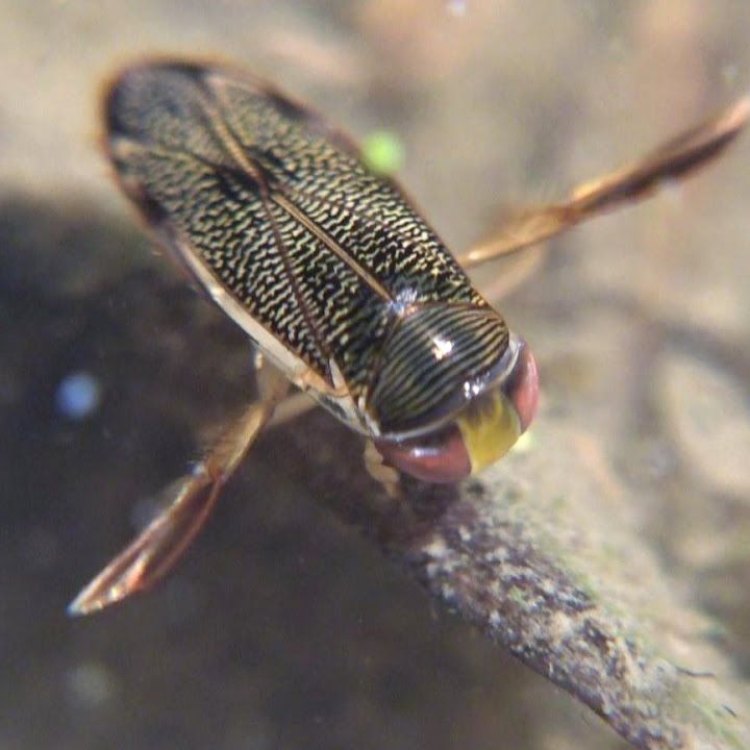
Giant Water Bug
- Adult Size: Up to 2.5 inches (6.35 cm)
- Average Lifespan: 1-2 years
- Reproduction: Sexual
- Reproductive Behavior: Male carries eggs on its back until they hatch
- Sound or Call: Can produce stridulation sounds by rubbing body parts together
- Migration Pattern: Non-migratory
- Social Groups: Generally solitary
- Behavior: Aggressive and territorial
- Threats: Habitat loss and pollution
- Conservation Status: Not evaluated
- Impact on Ecosystem: Top predator in freshwater ecosystems
- Human Use: Food source in some cultures, used in traditional medicine
- Distinctive Features: Large size, long legs, pointed mouthparts
- Interesting Facts: Giant Water Bugs are also known as 'toe-biters' due to their painful bite
- Predator: Fish, turtles, birds, and other predatory insects
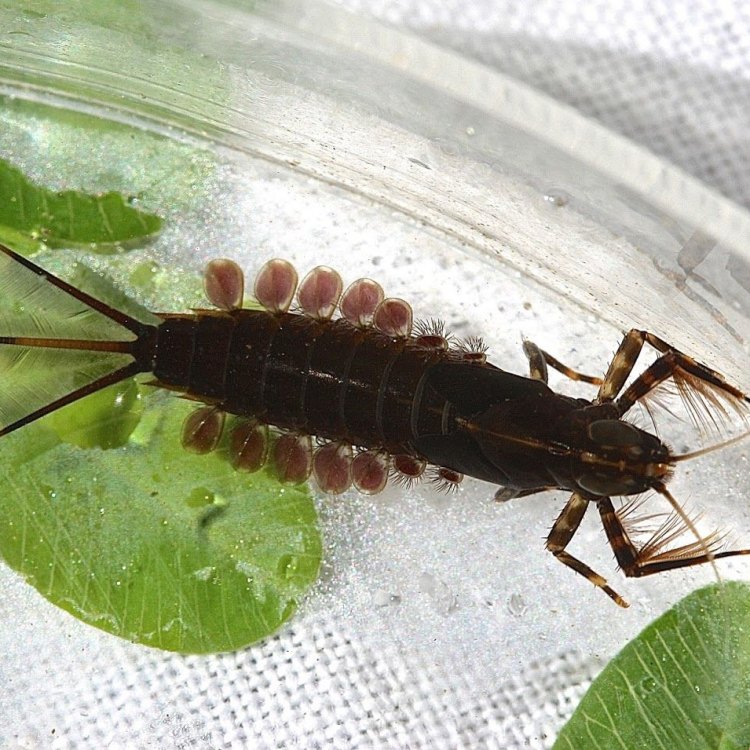
Lethocerus americanus
The Mighty Water Bug: A Top Predator of Freshwater Ecosystems
The world is full of fascinating creatures, big and small, that play unique and essential roles in their respective ecosystems. One such creature that often goes unnoticed but is crucial to the balance of freshwater ecosystems is the water bug. These insects, also known as toe-biters, belong to the order Hemiptera and are a diverse group with over 5,000 species worldwide. In this article, we will take a deep dive into the intriguing world of water bugs, exploring their physical characteristics, behavior, and impact on the environment PeaceOfAnimals.Com.Physical Characteristics
Water bugs are surprisingly large insects, with some species growing up to 2.5 inches (6.35 cm) in length, making them one of the largest insects found in freshwater ecosystems. Their size is often what catches the eye, but there is much more to these insects than just their impressive length. They have unique physical features that make them stand out from other insects.
One of the most distinctive features of water bugs is their long and powerful legs. These legs enable them to move swiftly through the water and also aid in capturing prey. Water bugs are carnivores, and their pointed mouthparts are designed for piercing and sucking fluids from their prey. These mouthparts are a vital tool for their survival in their aquatic environment, allowing them to feed on a wide variety of prey such as small fish, tadpoles, and even frogs Woodrat.
Behavior and Reproduction
Water bugs have fascinating reproductive behavior that adds to their uniqueness. They reproduce sexually, and the male carries the eggs on its back until they hatch, which can take up to two weeks. The eggs are attached to the male's back by a sticky gel, forming a raft-like structure, and the male provides protection and oxygen to the eggs until they hatch. This behavior is not common among insects and is a standout feature of water bugs.
Apart from their reproductive behavior, water bugs also have interesting behavioral patterns. They are generally solitary and prefer to live and hunt alone. These insects are highly territorial and will fiercely defend their territory from other bugs, sometimes even resorting to aggressive behavior. They will also cannibalize their own kind if food is scarce, showing their adaptability in challenging situations.
Sound Production
Another fascinating feature of water bugs is their ability to produce stridulation sounds by rubbing various body parts together. These sounds are most commonly used as a mating call, with males trying to attract females with their unique and distinctive sounds. However, these sounds can also serve as a warning to potential predators. The sound produced can range from a low hum to a loud buzzing noise, and the exact mechanism behind this sound production is still not fully understood.
Habitat and Migration Patterns
Water bugs can be found worldwide, except in Antarctica, and are most commonly found in freshwater habitats such as lakes, ponds, and streams. They prefer still or slow-moving water bodies and can be found in both tropical and temperate climates. These insects are not migratory and do not travel long distances in search of food or ideal breeding grounds. They are generally non-migratory, staying in the same habitat throughout their lifespan.
Social Behavior and Threats
Contrary to popular belief, water bugs are not social insects and are most often found living and hunting alone. However, they may sometimes come into contact with other water bugs during mating or competing for resources. As mentioned earlier, these insects are highly territorial and will defend their space aggressively.
Sadly, water bugs face several threats in their natural habitats, primarily due to human activities. Habitat loss from activities such as urbanization, deforestation, and dam construction is a common threat, and pollution from industrial, agricultural, and domestic sources also poses a significant danger. These activities can disrupt the delicate balance of freshwater ecosystems, which can have devastating effects on the populations of water bugs and other aquatic organisms.
Conservation Status
Despite facing various threats, water bugs have not been evaluated for their conservation status. This is primarily because of the vast number of species and the lack of sufficient data on their populations. However, as we continue to see the decline of freshwater ecosystems, it is essential to recognize the crucial role water bugs play in maintaining the balance of these environments.
Impact on the Ecosystem
Water bugs may not be the most well-known creatures, but they play a vital role in the balance of freshwater ecosystems. As top predators, they help regulate populations of other insects, fish, and amphibians, making sure that no single species overpopulates and disrupts the ecosystem. This is crucial for maintaining a healthy and diverse environment.
Human Use
Water bugs have been featured in various cultures and traditions worldwide. In some cultures, they are considered a delicacy and are consumed as a source of protein. They are also used in traditional medicine for various ailments, such as arthritis and rheumatism. However, it is essential to note that consuming water bugs can sometimes carry health risks, and they should only be consumed after consulting with a medical professional.
Distinctive Features and Interesting Facts
Water bugs have several distinctive features that set them apart from other insects. Their large size, long legs, and pointed mouthparts make them easily recognizable. However, one of the most interesting and well-known facts about water bugs is their painful bite, which has earned them the nickname 'toe-biters.' These bites can be quite painful and are used as a defense mechanism when they feel threatened.
Predators of Water Bugs
Despite being top predators, water bugs also have their fair share of predators. Fish, turtles, birds, and other predatory insects pose a threat to their survival. These predators play a significant role in regulating water bug populations and maintaining a balance in the ecosystem.
In Conclusion
Water bugs may not be the most glamorous or well-known creatures, but they play a crucial role in the balance of freshwater ecosystems. Their unique physical features, reproductive behavior, and sound production make them stand out from other insects. However, human activities and pollution pose a significant threat to their survival. It is essential for us to recognize the significant impact water bugs have on their environment and take steps to protect these crucial creatures and their habitats.

The Fascinating World of the Giant Water Bug
Disclaimer: The content provided is for informational purposes only. We cannot guarantee the accuracy of the information on this page 100%. All information provided here may change without prior notice.

